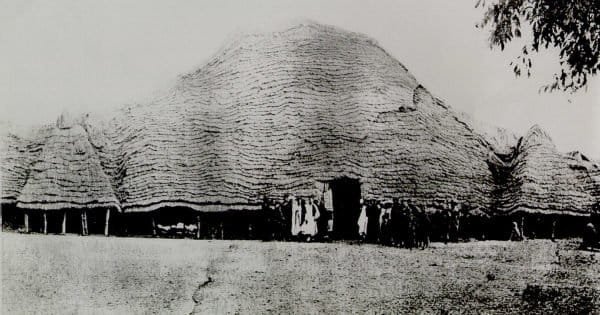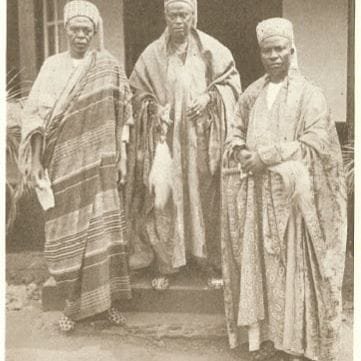The Owu Wall: Ancient Fortress of Nigeria’s Yoruba Kingdom
Deep within the green splendour of Osun State lies the Owu Wall, a testament to the past that speaks not a word. No stone cast, this is a powerful earthwork constructed from the earth itself.
Its high ditches and mighty ridges say much about unimaginable engineering and sheer persistence. Built by the Owu people, it says much about their bitter fight to protect their kingdom.
The wall is not dirt; it is a lasting tribute to resistance and a grand page in the great history of Nigeria, a testament to how the people’s spirit can be literally inscribed into the earth for the benefit of generations to come.
Read Also: The Great wall of Benin: Nigeria’s Forgotten Ancient Marvel
Table of Contents
Who are the Owu people?
To appreciate the grandeur of the Owu Great Wall, one must first understand who built it. Ajibosin, a grandson of Oduduwa, the legendary founder of the Yoruba dynasty, is the ancestor of the Owu people. In effect, the Owu practice is straight from the original dynasty of Yoruba.
This noble lineage benefited from its prosperity earlier. They chose to make their capital in an area named Orile Owu, which was a village that grew into a sturdy and forceful city-state.
The Owu were renowned everywhere for two reasons: their courageous fighters and their productive, fertile fields. The two together brought them unparalleled riches and fame, but also jealousy.
Their own power and victory planted the very first seeds of war with neighbouring kingdoms. The growing rivalry nurtured a desperate need for a colossal defence, setting the stage for their most significant achievement.

The Owu Wall – A Masterpiece of Earthwork Engineering
The construction of the Owu Wall was a staggering feat of engineering that relied upon communal labour and clever design. Rather than a stone wall standing vertically, it was a complex system of defence constructed entirely of the earth itself.
Workers excavated a network of deep trenches, digging into the earth to create ditches that were up to four meters deep. The world that had been dug up was then stacked strategically into tall, looming embankments. This clever design created a two-part barrier to any potential attacker: firstly, a sloping bank to ascend, and one immediately followed by a deep trough to pass under defence.
This massive project was a whole fifteen kilometres in length, surrounding the whole of the Owu core area and creating a clearly marked, defended area that was as much a testament to their ingenuity as it was to their determination to protect their home.
Strategic Defence and Natural Integration
The true genius of the Owu Wall lay in its seamless integration with the natural world. The builders understood their environment and used it to their supreme advantage.
They planted sturdy Silk-cotton trees on either side of the earthwork, an act of practicality and strategic frugality.
These trees had large root systems that formed a natural web, supporting the ground and the embankments against floods. Live support contributed to the durability and strength of the structure. The seasonal rains also filled the deep ditches with a radiant defensive element. They emerged from the water, creating a gigantic temporary moat that completely encircled the city.
Read Also: Explore the Beauty and Culture of Igbara Oke
This marvellous invention made weather a tool, turning it into an impenetrable liquid barrier that would be capable of stopping any invading army in its tracks, combining nature and defence into one unbeatable system.
The Spark of the Owu Wars
The true strength of the Owu Wall would be tested in the fires of conflict. During the early 1800s, a seemingly minor altercation erupted at the market of Apomu, expanding on the matter of the sale of alligator peppers. This minor altercation was the fuel that set alight long-burning rivalries and rival jealousies between neighbouring powers.
Seizing the opportunity, the mighty empires of Ijebu, Ife, and Oyo joined forces to form an overriding power with one objective: to conquer the rising power of the Owu kingdom. Together, their forces advanced towards Orile Owu in expectation of an easy conquest.
Instead, they were met by the immense and silent presence of the earthwork defences, a barrier that would transform a brief campaign into a legendary struggle and define the wall’s place in history.

The Owu Wall – The Long Siege and Symbolic Resistance
The conflict at Orile Owu settled into a gruelling test of endurance. This was no swift battle but a brutal five-year siege.
The allied armies of Ijebu, Ife, and Oyo found themselves completely halted by the earthen barrier. Their massive numerical advantage proved useless against the clever design of the ditches and embankments, which funnelled their assaults into easily defended points. The Owu Wall lasted half a decade. It was not just a defensive wall; it became a suffocating symbol of resistance.
Read Also: A Guide To The Amazing Facts About Idanre Hills
This soil composition will demonstrate that good design could overcome sheer military strength, allowing a determined people to drive away the region’s finest armies by pure willpower and astuteness.
The Owu Wall – The Fall and Migration
In the end, the greatest danger was not the enemy at the gates but the emptiness within. After five protracted years of blockade, the Owu defences remained unbroken, but the people’s resources were not.
Starvation and scarcity became the true invaders, slowly claiming a city that weapons could not conquer. Orile Owu fell not from a breached wall, but from a silent, relentless famine.
This defeat forced a painful exodus. The Owu people gathered what remained of their spirit and identity and abandoned their ancestral home.
Their journey led them to Abeokuta, where they would begin again. Though the wall could not secure victory, it had provided the precious time needed for their culture to survive intact, ensuring that their story would find a new home and a new future.
The Owu Wall – Archaeological Significance and Modern Threats
Currently, the weed-covered ditches and silent mounds of the Owu Wall stand as a significant archaeological site, telling its history in silence to anyone ready to hear it out.
The ancient structure provides a precious window into precolonial African innovation, revealing complex solutions to urban planning and war that remain largely unknown.
It is a formidable challenge to the antiquated thinking about Africa’s past. But this irreplaceable monument is quietly disappearing.
Large-scale deforestation and growing farmland are gradually consuming the site’s surrounding area. Illegally being felled are the very Silk-cotton trees that initially supported the earthworks.

Read Also: Ogbunike Caves: A Hidden Natural Wonder in Anambra
If neglected, this majestic monument to humanity’s imagination risks disappearing altogether, slowly reverting back to the same earth it was created from in the beginning, leaving behind its stories.
Maintaining a Legacy of Resilience
Saving the Owu Wall is a stealthy dash against the inexorable flow of time. The project is more than salvaging ancient ditches and dirt hills; it is more about safeguarding a rich tale of human resourcefulness and tenacious survival.
Each piece of soil that survives tells a story of a nation that used its mind to protect its home against mind-boggling adversity. This site is a permanent testament to the cleverness of the Owu people and part of Nigeria’s rich history that is more than worthy of a place on the international scene. Saving what remains is not only an archaeological responsibility; it is a matter of conscience.
Read Also: Olumo Rock’s History: A Fascinating Journey Through Time
It is a tribute to those who made it and provides coming generations a chance to stand on their grounds, steadfast in an inheritance that instructs us in what human beings can accomplish if they will not quit.
The Owu Wall










